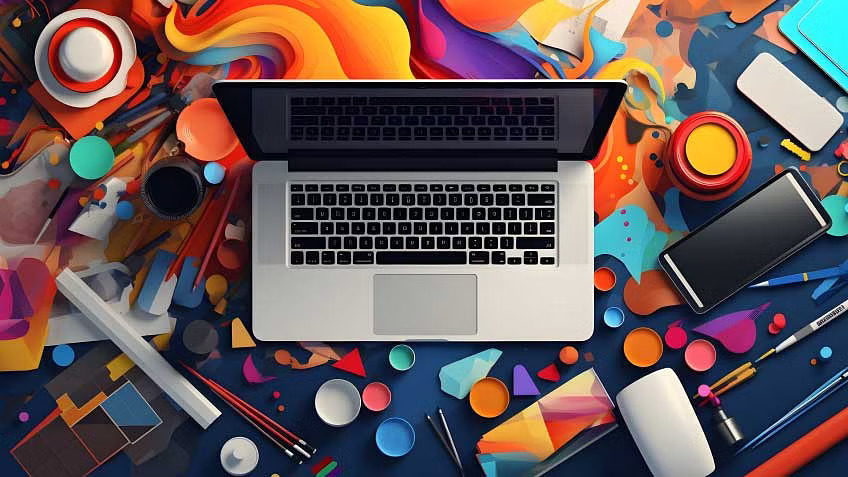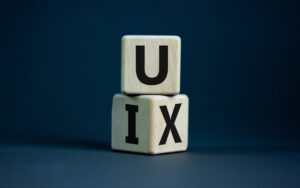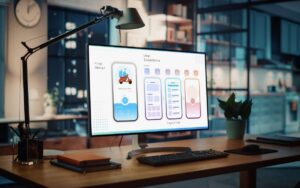In the ever-evolving digital landscape, the importance of user experience (UX) and user interface (UI) design cannot be overstated. Creating compelling, intuitive, and visually appealing digital products is crucial for engaging users and achieving business success. This guide delves deep into UI/UX design tools, offering insights to aspiring and seasoned designers. We explore various types of tools and criteria for selection, present a curated list of the best UI/UX tools available, detail future trends to watch out for, and share a UI/UX Design Bootcamp that can help professionals upskill. Understanding the right tools can significantly elevate your design process, whether you are a user interface designer or a product manager.
Types of UI and UX Tools
UI and UX tools come in various forms, each serving different aspects of the design process:
- Wireframing and Prototyping Tools: Essential for sketching initial design concepts and creating interactive prototypes.
- Visual Design Tools: Focused on creating the visual elements of the UI, such as icons, layouts, and color schemes.
- User Research and Testing Tools: Tools designed to gather user feedback, conduct usability tests, and analyze user behavior.
- Collaboration and Handoff Tools: Facilitate communication and collaboration among team members and the handoff between designers and developers.
Also Read: How to Design a User-Friendly Interface?
Criteria for Choosing UI and UX Design Tools
Selecting the right UI/UX tools involves considering several factors:
- Functionality: The tool should have the features necessary to meet your project’s requirements.
- Usability: Look for tools that are intuitive and easy to use.
- Integration: The ability to integrate with other tools and platforms can streamline your workflow.
- Cost: Evaluate the tool’s pricing relative to your budget and the value it provides.
- Community and Support: A strong user community and reliable support can be invaluable.
Best UI/UX Tools
Here’s a roundup of the best UI/UX tools, each catering to different stages of the design process.
Adobe XD
- Features: Vector-based design, prototyping, voice design, coediting.
- Pricing: Free starter plan; paid plans start at $9.99/month.
- Pros: Seamless integration with other Adobe products, robust prototyping capabilities.
- Cons: Can be complex for beginners, subscription-based pricing.
Sketch
- Features: Vector graphics editing, prototyping, code export, plugin ecosystem.
- Pricing: $10 per editor/month, billed annually.
- Pros: Intuitive interface, extensive plugin library.
- Cons: Can become expensive with plugins.
Figma
- Features: Cloud-based, real-time collaboration, prototyping, design systems.
- Pricing: Free for up to 2 editors; Professional plan at $12/editor/month.
- Pros: Platform-agnostic, excellent collaboration features.
- Cons: Complex projects can slow down the application.
Axure RP
- Features: Prototyping, documentation, user flows, integration with other tools.
- Pricing: Plans start at $25/user/month.
- Pros: Powerful for complex prototypes, good training resources.
- Cons: Steeper learning curve, pricey for small teams.
InVision
- Features: Prototyping, collaboration, design system management, InVision Studio.
- Pricing: Free for one prototype; plans start at $7.95/user/month.
- Pros: Integrates well with Sketch and Photoshop, good for team collaboration.
- Cons: Can become expensive for multiple projects.
Also Read: A Guide to Improving and Measuring User Experience
How to Choose the Right Tools
Selecting the right UI/UX tools involves understanding your project needs and comparing them against what each tool offers. Consider the following steps:
- Define Your Requirements: List the needed features, like wireframing, prototyping, or user testing.
- Set a Budget: Determine how much you’re willing to spend on design tools.
- Research and Compare: Look into each tool’s features, pricing, pros, and cons.
- Try Before You Buy: Utilize free trials or free versions to get a hands-on experience.
- Seek Recommendations: Consult with peers or online communities for insights.
Future Trends in UX and UI Design Tools
The future of UI/UX design tools is shaped by advancements in technology and changing user expectations:
- Artificial Intelligence and Automation: AI will streamline design processes, from auto-generating designs to enhancing user testing.
- Collaboration and Remote Work: Tools will continue to evolve to support seamless remote collaboration among global teams.
- Augmented Reality (AR) and Virtual Reality (VR): Design tools will increasingly support AR and VR, expanding the possibilities for immersive user experiences.
Wrapping Up
Navigating the vast landscape of UI/UX design tools can be daunting. However, by understanding the types of tools available, evaluating them based on specific criteria, and keeping an eye on future trends, designers can make informed decisions that best suit their needs and elevate their projects. The right toolset is instrumental in translating user needs and business objectives into compelling digital experiences. As the UI/UX design field continues to evolve, so will the tools and technologies that support it, pushing the boundaries of what’s possible in digital product design.
In your journey to find the perfect UI/UX tools, remember that no single tool will be the panacea for all design challenges. It’s about finding a combination of tools that complement each other and enhance your workflow. Whether you’re a freelancer working on varied projects or part of a large team with specific needs, the key is flexibility, integration, and the ability to adapt to new trends.
Also Read: UI/UX Designer Salary: What Can You Expect in 2024?
Embracing the Future with Confidence
The future of UI/UX design is incredibly promising. Tools are becoming more sophisticated, enabling designers to create more intuitive and engaging user experiences. As machine learning and artificial intelligence become more integrated into design tools, the designer’s role will evolve, focusing more on creativity and strategy and less on repetitive tasks.
Furthermore, the increasing importance of collaboration tools reflects a shift towards more holistic and team-oriented approaches to design. The ability to work seamlessly with stakeholders, regardless of location, will become a staple in the design process, making communication and feedback loops more efficient.
Augmented reality and virtual reality are set to offer unprecedented opportunities for creating immersive experiences. Designers will need to adapt to these new mediums, exploring the potential of 3D design and interaction in previously impossible ways.
Final Thoughts
The landscape of UI/UX design tools is dynamic, with new technologies constantly emerging to serve designers and end-users better. By staying informed and adaptable, designers can leverage these tools to create exceptional digital experiences that meet users’ evolving expectations. User interface designers can also gain practical experience working with top tools through a comprehensive online UI/UX program.
In conclusion, the journey through the UI/UX design tools world is one of discovery, learning, and innovation. By carefully selecting tools that align with project requirements, budget constraints, and future trends, designers can forge paths that lead to successful, user-centered digital products. Remember, the best UI/UX tools empower you to bring your creative visions to life while efficiently addressing the needs of your users. As we look to the future, let’s embrace the tools and trends shaping the next generation of digital design.
You might also like to read:
How to Become a UI UX Designer: A Comprehensive Guide
UI UX Designer Career Path: A Comprehensive Guide
All About UI UX Design Principles
Accessibility in UX Design: A Definitive Guide
Career Prep: Linux Interview Questions for UI/UX Design Professionals






